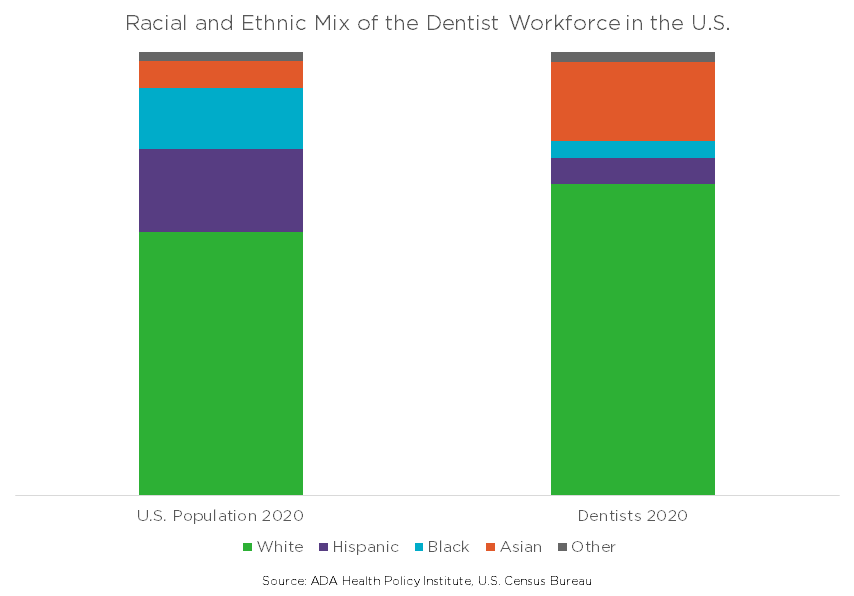Oral health disparities by race and ethnicity persist today
Why a diverse oral health workforce is important
-

In 2000, the U.S. Surgeon General released a report on oral health characterizing oral disease as a “silent epidemic” affecting vulnerable populations, including historically underrepresented groups, people with disabilities, and the elderly.
-

Even 20 years later, research shows that rates of tooth decay, periodontal disease, and oral cancers are far higher — and dental care utilization rates considerably lower — for historically underrepresented groups in the U.S.
There is an imbalance of historically underrepresented groups in the oral health professions
-

The U.S. Surgeon General and the Institute of Medicine have indicated that remediating this imbalance of dentists from historically underrepresented groups is an important step to improve cultural competency among dentists.
Racial and ethnic diversity among health professionals is linked to improved outcomes and to achieving greater health equity
-

Research finds that racial and ethnic diversity among health professionals is linked to improved access to care, greater patient choice and satisfaction, and better patient-provider communication for patients from historically underrepresented groups.
